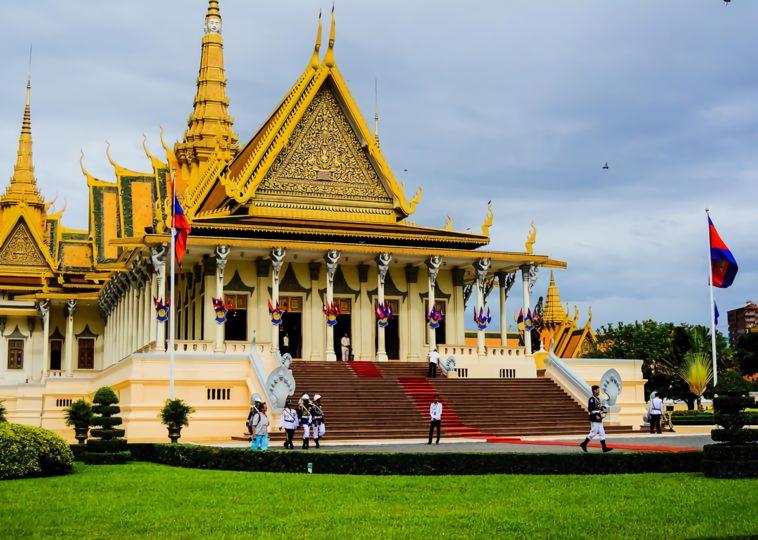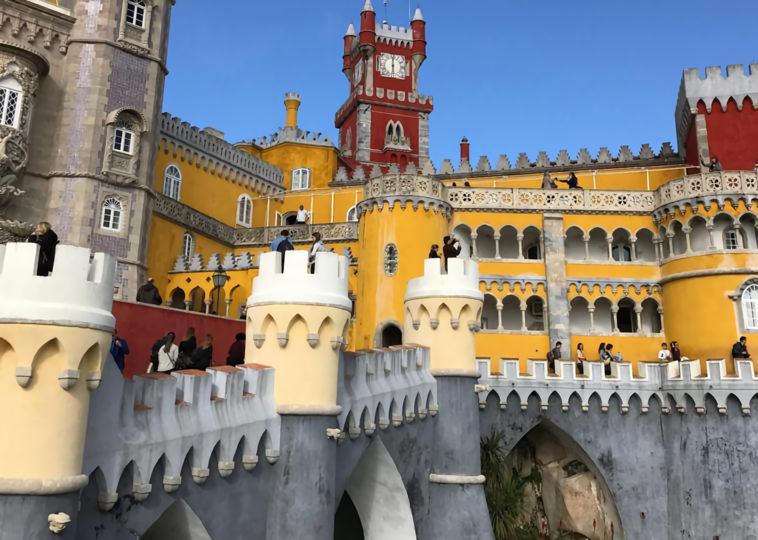Top 8 Marvelous Royal Palaces in the World

Contents [hide]
The royal houses of kings and emperors reflect their architectural style and abundance. Today, most of the largest palaces in the world are becoming one of the most popular tourist attractions. Visiting such large palaces helps to explore the kingdom’s history and the time’s lifestyle.
Once the home of kings and emperors, these opulent royal residences offer the opportunity to enjoy their architectural splendor and rich history. Today, these palaces are popular tourist destinations and provide contemporary visitors with an insight into the past.
Grand Kremlin Palace, Russia

The Great Kremlin Palace, built in Moscow between 1839 and 1849 under the direction of chief architect Konstantin A. Thon, was created to show the splendor of the Russian tsars, with the exterior reflecting a mix of Byzantine and medieval Russian architecture. The palace includes the beautiful and historic Terem Palace with over 700 rooms, nine churches, and the Holy Vestibule.
An excellent mix of Russian, Italian, and Eastern architecture is the official residence of the Russian President today. The palace buildings are built to form a rectangular courtyard. The Grand Kremlin Palace is part of the Moscow Kremlin and is a UNESCO World Heritage Site.
Pena National Palace, Portugal

The National Palace of Pena is located in the Sintra hills in Portugal. In 1493, King John II of Portugal built a monastery that protected one king after another for centuries. King Ferdinand II transformed these ruins into the beautiful palace, the National Palace of Pena. The romantic style was used for the construction of this palace.
Pena National Park and Palace are among the most creative royal palaces ever. Acidified by the beauty of the former uninhabited monastery, King Ferdinand II decided to acquire the monastery together with its surrounding areas to create a summer residence for the Portuguese royal family.
Schonbrunn Palace, Vienna

The palace was built between 1696 and 1712 by the order of Emperor Leopold I. This Rococo palace, with its 1441 rooms, is the most visited place in Austria. It includes the famous gold and white mirror room, with its crystal mirrors, in which a six-year-old Mozart premiered.
The 40 rooms, open to tourists and visitors, feature a rare rosewood-clad Millions Room and the tapestry salon, which features a fine collection of ornate tapestries from Brussels, Belgium. The carved garden in front of Schonbrunn Palace makes this place more beautiful.
Mysore Palace, India

The hotel is located in the city of Mysore, known as the City of Palaces, in southern India. Different kings built Mysore Palace in other centuries. The first part of this palace was built in the 14th century by Wodeyar kings, who were built several times by subsequent generations.
The renovation and construction of new parts of today’s Mysore Palace occurred between 1897 and 1912. A mix of Indo-Saracen, Hindu, Muslim, Rajput, and Gothic architecture styles is used to construct the palace. His palace, also known as Amba Vilas Palace, is the residence of the former royal family of Mysore, the Wodeyars.
Palace of Versailles, France

It is the most famous palace in France, southwest of Paris. It was built in 1624 by King Louis XIII. In 1682, King Louis XIV expanded it into the largest palace in the country, which was used as a permanent residence. The Palace of Versailles has 700 rooms, 1200 fireplaces, and 60 stairs.
The famous Palace of Versailles in France was initially a two-story hunting lodge, which Louis XIII. Then, Louis XIV built a palace on the site and transferred royal proceedings from Paris to Versailles. The adjacent garden is also famous, with a footfall of 8,000,000 annual visitors.
Wilanow Palace, Poland

This beautiful baroque royal residence began in the summer of 1677 as a one-story building built by court architect Augustyn Locci when King John Sobieski III. took possession of a village in Warsaw. The palace, completed in 1696, combines an Italian garden villa, a noble house, and a French palace.
The royal apartments are on the ground floor. In contrast, on the first floor is the Gallery of Polish Portraits, which consists of portraits of the Polish monarchs and other prominent figures in Poland that have been gathered over the centuries.
Sanssouci Palace, Germany

Without hesitation in French, Sans Souci was the summer palace and private refuge of the King of Prussia, Freidrich the Great. A place where he could safely withdraw to relax with his sighthounds, Sanssouci Palace or Sanssouci Palace, is in Potsdam, on the border with Berlin.
The architecture of Sanssouci was built on an elevated floor with cascading vineyard terraces and is more Frederician Rococo due to the strong influence of the king’s taste. Sanssouci attractions that should not be missed include the reception area of the Pantheonic gold and white marble hall, the Voltaire Hall, and Antoine Watteau’s painting.
Forbidden City, China

The Forbidden City is the largest palace complex in the world, located in Beijing, China. It is also known as the Imperial Palace and Palace Museum. This palace complex covers an area of 72 hectares. The Forbidden City has 980 buildings and 8707 different rooms. This palace complex was built between 1406 and 1420 to house Emperor Zhu Di.
The Forbidden City was home to 24 Chinese emperors from 1420 to 1912. This complex was decorated with stone animals, rails, arches, and dragons. Until 1912, no one was allowed to enter this complex without the emperor’s permission.


